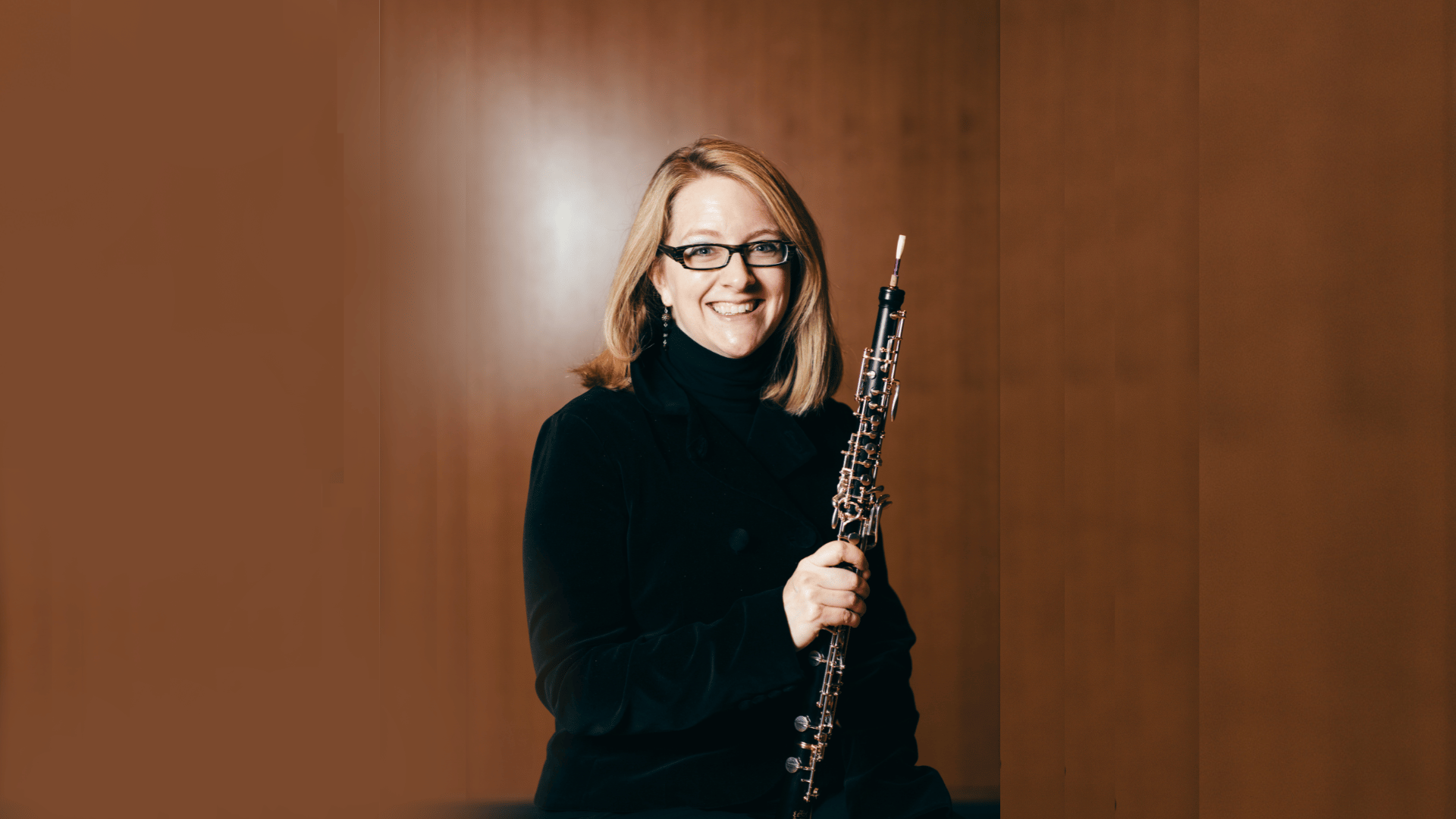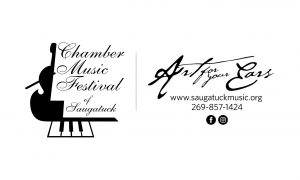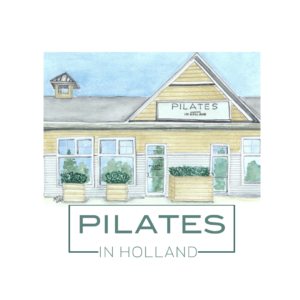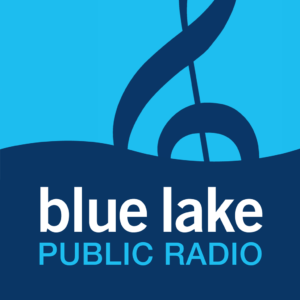Surprise Symphony


Surprise Symphony
Program
Saturday, March 9, 20234, 7:30 p.m.
Jack H. Miller Center for Musical Arts, Hope College
Johannes Müller Stosch, Music Director and Conductor
Sarah Southard, Oboe
Two Pieces for Small Orchestra
Frederick Delius (1862-1934)
On Hearing the First Cuckoo in Spring
Summer Night on the River
Danzas de Panama
William Grant Still (1895-1978)
Tamborito: Moderato
Mejorana y Socavón: Allegro moderato
Punto: Allegretto con grazia
Cumbia y Congo: Allegro con moto
Oboe Concerto, Op. 45
Eugene Goosens (1897-1988)
Sarah Southard, oboe
Intermission
Symphony No. 94 in G Major, “Surprise”
Franz Joseph Haydn (1732-1809)
Adagio; Vivace assai
Andante
Menuetto: Allegro molto
Allegro di molto
Enjoy the relaxing quality of Delius’s pieces, the delightful Latin rhythms of William Grant Still’s set of dances, and the musicality of HSO principal oboist Sarah Southard in the first half of this concert. The second half will delight you with Haydn’s playful and well-known “Surprise Symphony.” Tickets are $28 for adults and $5 for students through college. Learn more about the music…We will be hosting not only the Classical Chat series at Freedom Village, but also Pre-Concert Talks! Details below: Classical Chats at Freedom Village: These informative and fun talks are led by Johannes Müller-Stosch and take place at 3:00pm on the Thursday before each Classics concert. (Freedom Village, 6th Floor Auditorium, 145 Columbia Ave.) Pre-Concert Talks: These talks, led by Johannes Müller-Stosch and Amanda Dykhouse, are online under the "Pre-Concert Talk" Tab. New to the Symphony? Check out the Frequently Asked Question page… Parking Map at the Miller Center Holland Symphony Orchestra will reserve and monitor Lot 40 for handicapped parking. The faculty parking lots are available for parking after 5pm
|
Two Pieces for Small Orchestra
Frederick Delius
Born: January 29, 1862 in Bradford, England
Died: June 10, 1934 in Grez-sur-Loing, France
Composed: 1912
Premiered: October 23, 1913, in Leipzig
Approximate Duration: 7 minutes
Instrumentation: 2 flutes, 1 oboe, 2 clarinets, 2 bassoons, 2 French horns, strings
English composer Frederick Delius tried his hand at a lot of things in his young adulthood. He failed in an attempt to run an orange grove in Florida. He taught music in Virginia, and spent some time as an organist in New York. He also pursued a musical apprenticeship at the Leipzig Conservatory, where he befriended Edvard Grieg and met his wife, a German painter. After receiving an inheritance from his father, a wealthy German wool merchant who found a lot of success in Manchester, England, he moved to France and bought a villa in Grez-sur-Loing. He and his wife lived in relative isolation there, supported largely by inheritances that they both received. He composed pieces that were well-received in parts of continental Europe and Scandinavia, but he had more trouble gaining a foothold in his native England. Two friends gave him similar advice. Peter Warlock said, “Write some short pieces for small orchestra, and English orchestras will devour them.” Percy Grainger advised him, “I do wish you had in print some piece for not too big orchestra & not too wildly hard ... that could be performed with an hour’s rehearsal & then form part of the general repertory.”
Delius wrote these orchestral miniatures–two short tone poems–in 1912. “On Hearing the First Cuckoo in Spring” is one of Delius’s most played and beloved works. It combines a French Impressionist language with English lyricism. It has a bittersweet mood, reflecting the inevitable passing of seasons and time. Composers often assign cuckoo calls to the clarinet, and Delius is no exception. After this beginning the violins then introduce a Norwegian folk song, “In Ola Valley,” which Percy Grainger had introduced to Delius. This piece is a dialogue between strings and woodwinds, between the cuckoo call, played sixteen times by the clarinet, and the folk tune. “Summer Night on the River” depicts the Loing River near the French village of Grez where Delius lived. His gardens bloomed along the edge of the river. This piece is particularly Impressionistic, portraying mist over the river and the gentle rocking of boats. A peaceful cello solo depicts the quiet river on a warm summer evening.
To watch video of "On Hearing the First Cuckoo in Spring," click here.
To listen to "Summer Night on the River," click here.
Danzas de Panamá
William Grant Still
Born: May 11, 1895, Woodville, Mississippi
Died: December 3, 1978, Los Angeles
Composed: 1948
Approximate Duration: 15 minutes
Instrumentation: strings
William Grant Still, Jr. was born in a small Mississippi town. His parents were teachers and musicians. HIs father, William Grant Still, Sr., died when he was three months old. His mother moved to Little Rock, Arkansas and continued teaching high school English. She eventually remarried in 1904, and Still’s stepfather nurtured his interest in music, buying him records and taking him to concerts and operettas. Still began violin lessons at age fifteen and also taught himself to play clarinet, saxophone, oboe, viola, cello, and bass.
Following his mother’s wishes, Still pursued pre-medical training at Wilberforce University, a historically black college in Ohio. While there he conducted the band, started composing and orchestrating music, and learned several more instruments. He left Wilberforce before graduating and pursued musical studies at Oberlin College, funded by a small inheritance from his father. That money didn’t last long, and he had to work a lot to pay for his education. Eventually some faculty, who were impressed with his musical abilities, noticed his challenges and created a scholarship just for him. Still subsequently studied composition with the modern French composer Edgard Varése and American composer George Whitefield Chadwick.
Early in Still’s career he spent a lot of time in New York City. He worked for W. C. Handy’s band and performed with many notable pit orchestras. He arranged a lot of music for the popular NBC radio broadcasts Deep River Hour and Old Gold Show. He was prominent in the Harlem Renaissance movement and is known as the “Dean of African-American composers.” He eventually moved to Los Angeles, where he continued performing and composing and arranged music for films including Pennies from Heaven and Lost Horizon.
During a time in the United States when Jim Crow laws were common, William Grant Still attained a level of musical prominence that would have seemed impossible for almost any other person of color. He claims many “firsts” for African-American composers.
- He was the first black man to conduct a major American orchestra, leading the Los Angeles Philharmonic at the Hollywood Bowl in 1936.
- He was the first black composer to have a symphony performed by a major American orchestra. The Rochester Philharmonic, conducted by Howard Hanson, performed Still’s Afro-American Symphony in 1931.
- He was the first black man to conduct an orchestra in the deep south, leading the New Orleans Philharmonic in 1955.
- He was the first to have an opera performed by a major company (Troubled Island, 1949, in NYC), and the first to have an opera performed on national television (Bayou Legend in 1981).
As a composer, Still is known for blending European art music and African-American melodies like those in spirituals and scales and harmonies from jazz and blues. This is evident in his Danzas de Panamá, a suite of dances based on Panamanian dance themes originally collected by Elizabeth Waldo. The first movement, “Tamborito,” is based on an African theme probably brought to Panama by enslaved peoples. This traditional Panamanian dance uses a familiar habañera rhythm (3+2) and is performed with voice or strings and percussion. Still includes a percussive statement at the beginning and end of the movement. This music alternates between two dances, one thoughtful and chromatic and one rhythmic and fast. “Mejorana y Socavón” reflects two types of Panamanian guitars. The melody is innocent and relaxed, with an improvisatory style. The middle section is rhythmically aggressive. The third movement, “Punto,” is a graceful dance characterized by Zapateo (shoe-tapping) and Paseo (Promenade), which also occur in the Mejorana. It has the feel of courtship enacted by two dancers. The last movement also has African origins and is the most sensual of all the dances. Still uses non-traditional percussive ways of playing string instruments to add additional colors and effects to his music. These two folk dances, cumbia and congo, feature a driving tempo that suggests pounding feet and swirling colorful dresses, leading to a fast and exciting conclusion.
To listen to Danzas de Panamá, click here.
Concerto in One Movement for Oboe & Orchestra, Op. 45
Eugene Goossens
Born: May 26, 1893, London
Died: June 13, 1962, Hillingdon, Middlesex, England
Composed: 1927
Approximate Duration: 11 minutes
Instrumentation: 2 flutes (one doubling piccolo), 2 clarinets (one doubling bass clarinet), 1 bassoon, 2 French horns, 1 trumpet, harp, celeste, bass drum, cymbals, glockenspiel, tam tam, xylophone, strings
Following World War I, Sir Eugene Goosens emerged as one of the most prominent young British Composers. He was part of an influential musical family. His father and grandfather, Eugene I and Eugene II, were conductors. His brother Leon was an oboist–one of the most distinguished of the twentieth century–and his sisters, Marie and Sidonie, were harpists. His brother Adolph, a horn player, was killed in World War I.
Eugene (the composer) was sent to boarding school at age eight in Bruge. He returned to England in 1906, where he studied at Liverpool College of Music and then earned a scholarship to attend the Royal College of Music in London in 1907, where he studied violin, piano, theory, and composition. He spent his early career as an orchestral and opera violinist, and then gained a strong reputation as a conductor. He spent some time in the US as the first conductor of the Rochester Symphony Orchestra from 1923-1931 and taught at the Eastman School of Music, and then became music director of the Cincinnati Symphony Orchestra until 1946, before moving to Australia to direct a conservatory in New South Wales and became the chief conductor of the Sydney Symphony Orchestra. There he worked diligently for a performing arts center that ultimately led to the Sydney Opera House. He was knighted in 1955 and lived in London for the remainder of his life.
As a composer Goossens experimented with “modern” music early in his career, but spent most of his time thoroughly grounded in the language of romantic composers. He wrote two symphonies, two operas, and many other works for orchestra, soloists, and chamber music ensembles. He wrote his oboe concerto for his brother Leon in 1927.
To listen to the Goossens concerto, click here.
Franz Joseph Haydn
Symphony No. 94 in G Major, Hob. I:94, “Surprise” or “With the Drum Strike”
Born: March 31, 1732, Rohrau, Lower Austria
Died: May 31, 1809, Vienna
Composed: 1791
Approximate Duration: 23 minutes
Instrumentation: 2 flutes, 2 oboes, 2 bassoons, 2 horns, 2 trumpets, timpani, and strings
Music donated by Stuart and Lynette Fall
Franz Joseph Haydn spent much of his career (1761-1790) working for the Esterházy family–initially, for Paul Anton and then for his brother Prince Nicolaus. The family loved music and was very supportive of Haydn. Haydn enjoyed the freedom to compose, the financial security to experiment, and strong musicians who could play what he wrote well. The Esterházy estate, described by a traveler as “having no place but Versailles to compare with for magnificence,” became known as a major center for music. While on this estate he developed the four-movement structure that composers have used ever since. Over the decades on the Esterházy estate the size of his orchestra grew and the complexity of Haydn’s music.
Toward the end of Haydn’s employment with the Esterházy family, he became increasingly isolated. In a letter to a friend Haydn wrote, “Well, here I sit in my wilderness – forsaken – like a poor waif – almost without any human society – melancholy – full of the memories of past glorious days.… ” When Prince Nicolaus died, Haydn was freed from his obligations to the family. In 1790 he decided to leave Austria and settle in London. He spent the next two years there.
In London Haydn composed his last twelve symphonies. The concerts at which these symphonies were performed could go on for hours, and even though Haydn was the star attraction, the length of the evenings often took its toll on audience members. After the premiere of Haydn’s Symphony No. 94, a newspaper described the second movement, a theme with four variations, in this way: “The second movement was the happiest of this great Master’s conceptions. The surprise might not be unaptly likened to the situation of a beautiful shepherdess, who, lulled to slumber by the murmur of a distant waterfall, starts alarmed by the unexpected firing of a fowling-piece. The flute obligato was delicious.” Haydn denied the rumor that he wrote this movement to wake up audience members who fell asleep at his concerts. The famous chord wasn’t even in the earliest versions of this symphony. Allegedly, Haydn claimed that he wanted to make a grand statement to outshine other composers, but no one really knows why he added the gratuitous chord. “No, rather it was my wish to surprise the public with something new, and to make a debut in a brilliant manner so as not to be outdone by my pupil Pleyel [Pleyel was giving concerts in London at the same time as Haydn] ... the enthusiasm reached its highest point in the Andante with the kettledrum beat. ‘Encore, Encore’ sounded from every throat, and even Pleyel complimented me on my idea.”
The symphony opens with a slow introduction, like all but one of Haydn’s London symphonies. Alternating wind and string chorales give way to a brisk, joyful movement in A-B-A form. The second movement is a theme and variations on the famous theme, a tune that is marked by its simplicity. The third movement, Menuet and Trio, is really an Austrian ländler, a peasant dance in triple meter. The finale is fast and exciting–a rondo that alternates between the opening theme and other tunes, ending with an energetic conclusion.
To watch a video of the "Surprise Symphony," click here.
Sarah Hustad Southard joined the Hope College Music Department faculty as instructor of oboe in fall 2007. She has taught as temporary instructor of oboe at Central Michigan University and as adjunct professor at the University of Michigan-Flint and Northern Kentucky University. Along with her collegiate teaching, Sarah keeps an active studio of area oboists and has enjoyed working with many youth programs like the Interlochen Center for the Arts All-State Orchestra and All-State Band, the Holland Area Youth Orchestra Chamber Music Program, the Cincinnati Youth Wind Ensemble and the Wisconsin Youth Symphony Orchestras.
Besides teaching, Sarah is an active performer, playing regularly with the Midland and Holland symphony orchestras. She has also had the pleasure of performing with other groups such as the Lansing Symphony in Lansing, Michigan; the New World Symphony Orchestra in Miami, Florida; the Cincinnati Symphony Opera Orchestra in Cincinnati, Ohio; and the Madison Symphony and Chamber Orchestras in Madison, Wisconsin. As well as her orchestral playing, Sarah has performed in chamber groups at Hope College, the Chamber Music Festival of Saugatuck and the Free at Three Concert Series (formerly the Herrick Library series in Holland, which she also took part in) and has soloed nationally and internationally at locations including Italy, England and Scotland.
Sarah received her Doctorate of Musical Arts from Michigan State University with oboist Jan Eberle, her Master’s of Music at the University of Cincinnati College-Conservatory of Music with Mark Ostoich, and her Bachelor of Music from the University of Wisconsin-Madison studying with Marc Fink.
To watch the pre-concert video, click here.
- This event has passed.
Details
- Date:
- March 9
- Time:
-
7:30 pm - 9:30 pm
- Cost:
- $28
Venue
- Jack H. Miller Center for Musical Arts at Hope College
-
221 Columbia Ave.
Holland, MI 49423 United States + Google Map
Organizer
- Holland Symphony Orchestra
























